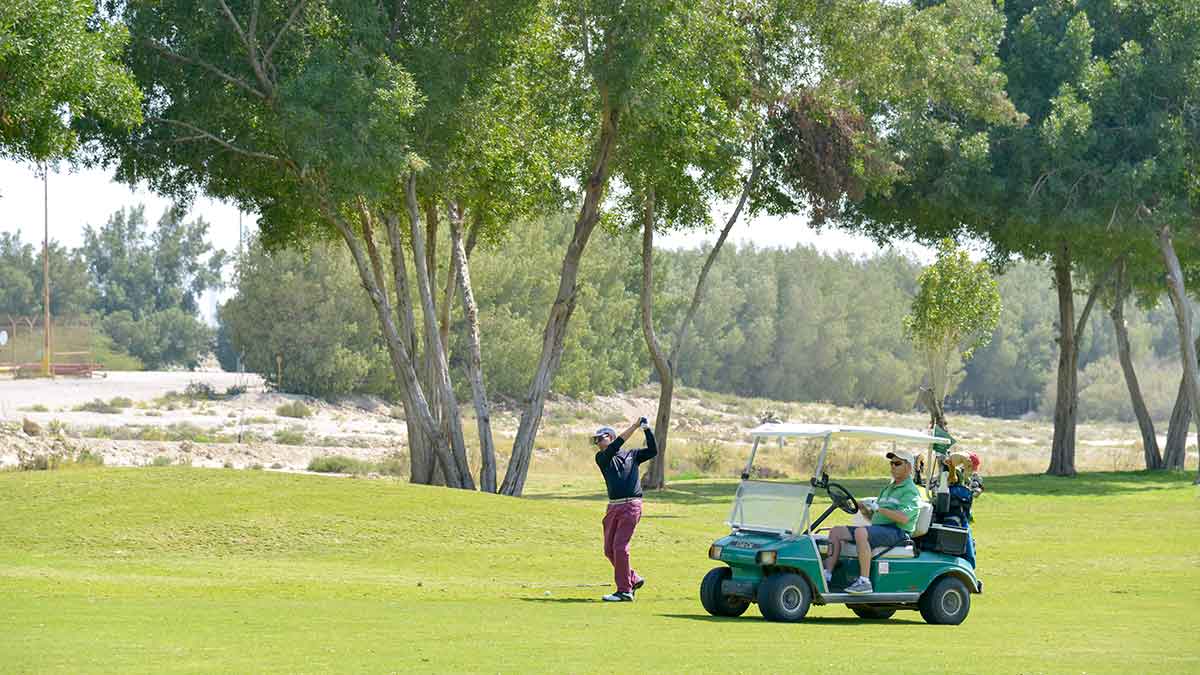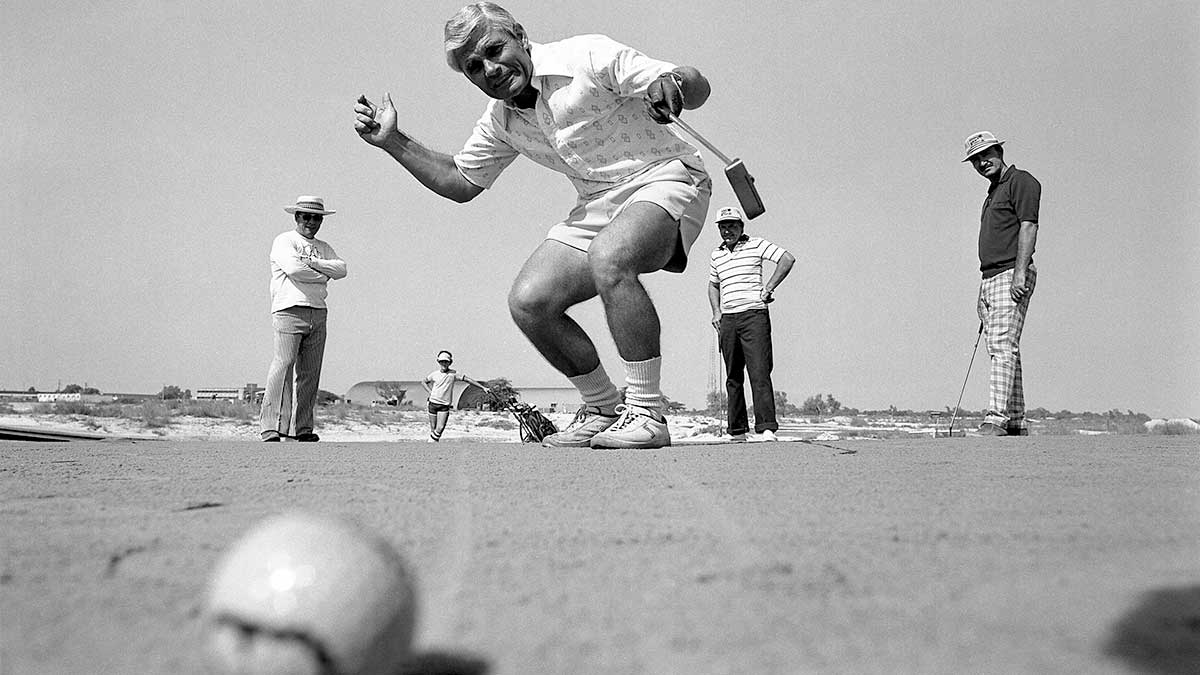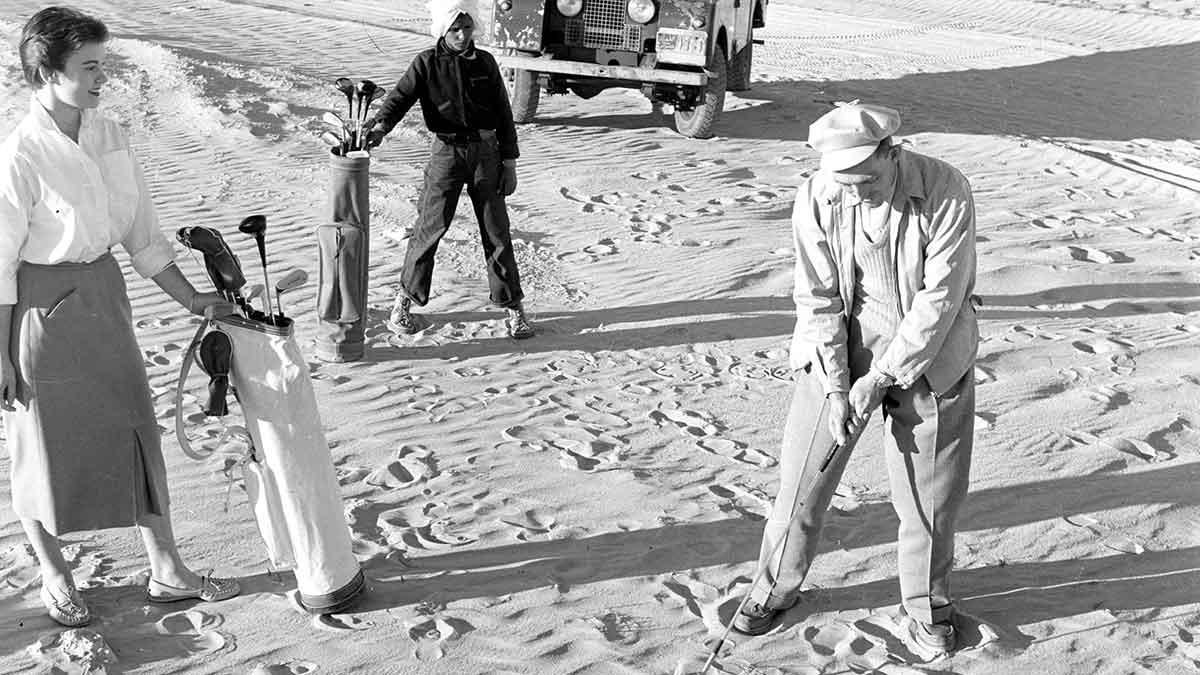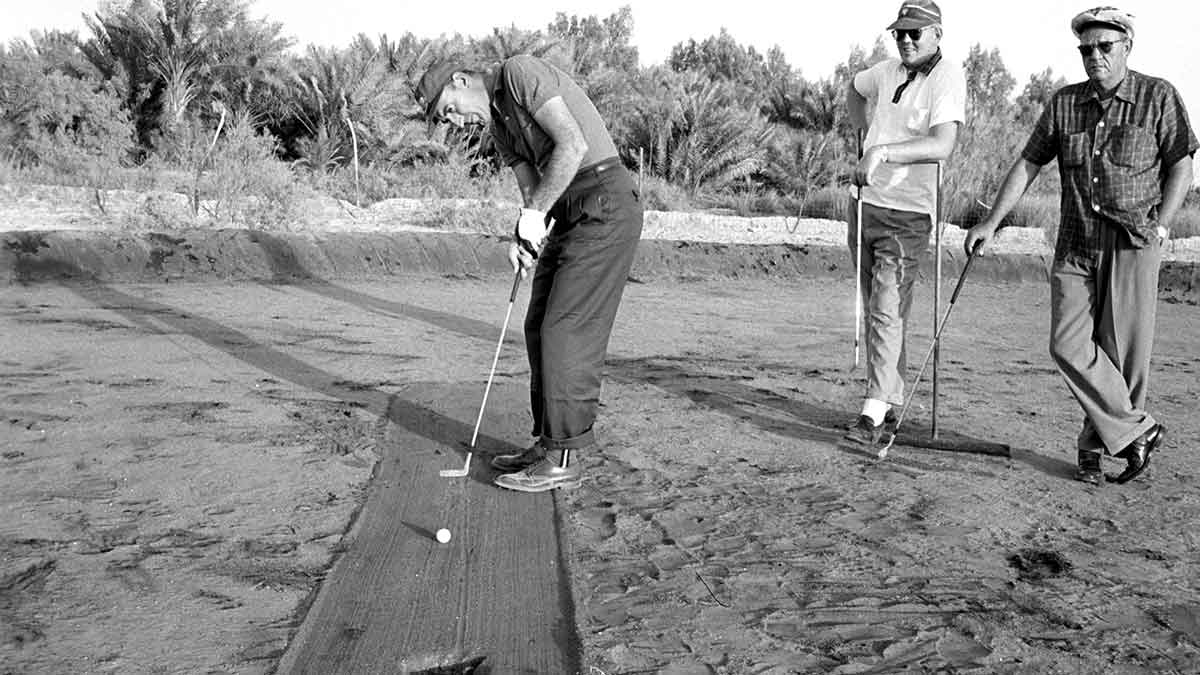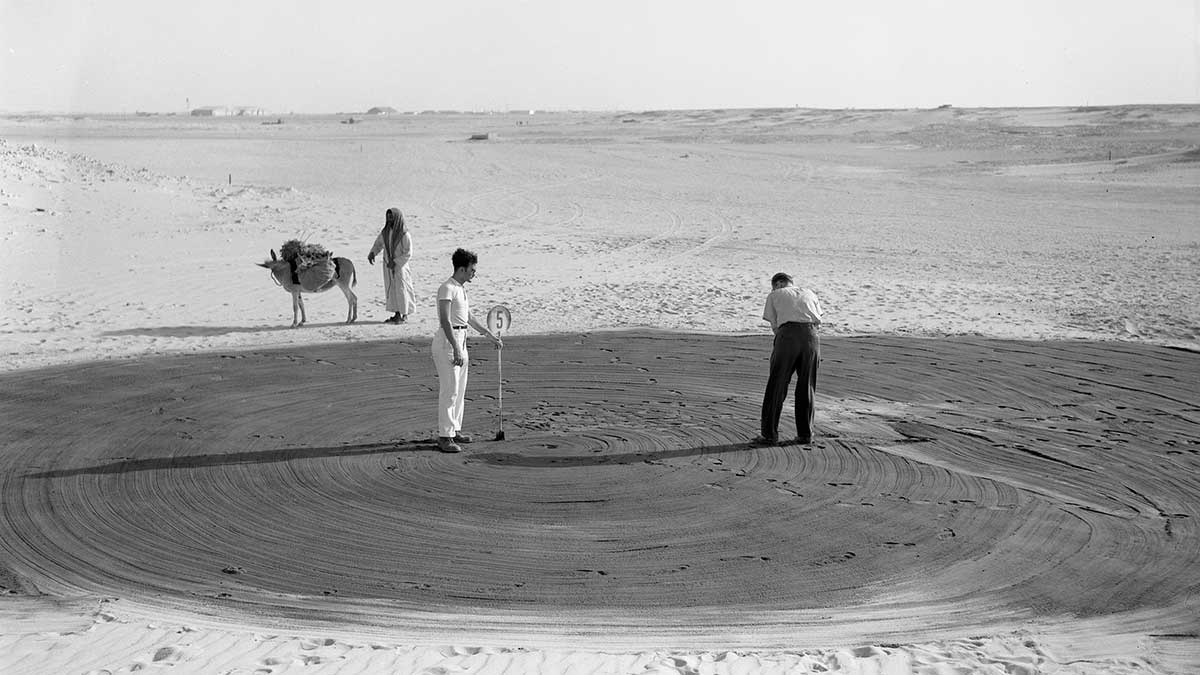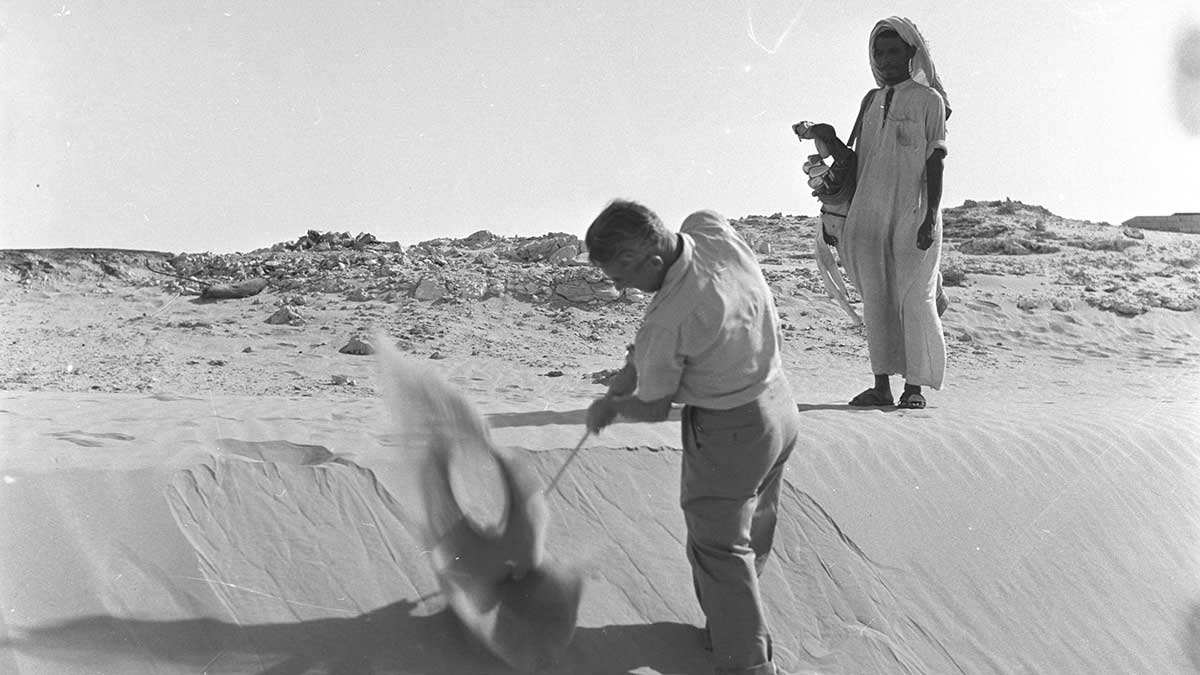Our History
Over 70 years of golf history at Aramco
The video is blocked
Global February 04, 2021
Approximately 17 years ago, Rolling Hills Golf Course went green.
Aramco has a key place in golf’s history in the Kingdom.
More than 70 years ago, it brought the sport to the Eastern Province with a pioneer spirit appropriate to the era. And about 17 years ago, it welcomed the introduction of a grass course that was remarkable in its presence.
On the 65th anniversary of the Rolling Hills Golf Club in 2014, Gordon Rentz spoke about what it was like to play on the course both before and after its greening.
Having arrived in Saudi Arabia from Canada in 1981, Rentz said golfing on sand courses posed some unique challenges.
“Playing off a grass mat helped to make golfers’ game a little more consistent because you always had a good lie to hit from; you never had to hit out of a plugged lie or divot mark,” said Rentz. “But playing on the greens was a little more unpredictable. It was not uncommon to hit what you would think was a great shot and the next thing you saw was it careening off a bare spot on the green and ending up well over the green. Then there was the opposite situation where the ball would hit a fluffy patch on the green and the ball would stop dead. Just like on grass, we were still at the mercy of the golfing gods.”
Rentz recalled the buzz among the golfing community when word of a grass course first began making the rounds in the late 1990s. The anticipation only heightened in April of 2001 when work on the Dhahran course got underway, with the top 25 inches of sand scraped off and hauled away.
Then, 250,000 cubic yards of sweet sand was brought in, topped off with another 100,000 cubic yards of “blaster” sand to support the grass.
Ten thousand bushels of salt-water tolerant, pest resistant grass, paspalum vaginatum, had been shipped in from the state of Georgia in the U.S and was planted on the first three holes. The grass for the remainder of the 18-hole course was then harvested from the initial planting.
In all, 91 acres of grass was planted, along with 320 Washingtonia and date palm trees, as well as nearly 5,000 small trees, more than 23,000 shrubs and 30,000 ground-cover plants.
“It was all very exciting,” said Rentz. “At long last came the day there was no need to drive or fly to another country in the Gulf to play on grass. We finally had our own grass course!”
What many don’t know about the Dhahran course was that it was the expansion of Saudi Aramco’s wastewater treatment plant, which resulted in enough reclaimed water for irrigation, that made it possible. Every day, about 2 million gallons of reclaimed water is used to irrigate the course, with that number bumped up to about 2-1/2 million during the summer.
The concept of Xeriscaping, which emphasizes low water usage and native plant species, also helps mitigate the water requirements for the environmentally friendly facility.
We are very fortunate to have such a wonderful facility, and I must congratulate Saudi Aramco management for taking the bold step to bring this course into existence. This is just another example of how they are committed to their No. 1 resource: their employees.
— Gordon Rentz
RHGC, which was known as Rolling Hills Country Club until 2005, is one of the longest-serving self-directed groups within Saudi Aramco. This year, the club has more than 600 members, including dependents.
